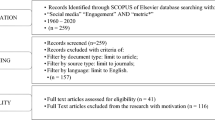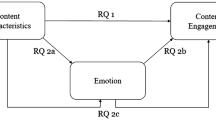Abstract
A scientific and systematical evaluation of animations will be able to reflect the integrated strength of animations. Based on the popularity of animations in the market and the quality of animations, and following the principles of index selection, we propose an animations evaluation system (AES) by using multiple social research methods. We establish and analyze a mathematical model based on analytic hierarchy process and fuzzy comprehensive evaluation. We then treat the missing data of the market repercussion index and the professional evaluation index by using hot deck imputation and mean imputation. Finally, with sample test to the data extracted from Chinese market, experimental results show that AES and the mathematical model is feasible and the missing data treatment is reasonable. Furthermore, we prove that social values and artistic values of animations, which are both part and parcel of the integrated strength of animations, can be objectively reflected by AES.






Similar content being viewed by others
References
EDITORIAL DEPARTMENT OF CHINESE ANIMATION YEARBOOK: Chinese Animation Yearbook, vol. 2006, pp. 7–37. China Radio and TV Press, Beijing (2006)
Li, Z.R.: Foreign experience in improving ability of cartoon industry. World Reg. Stud. 15, 23–29 (2006)
Lou, W.G.: The Development of Animation and Comic of Higher Education in China and the Existing Problems and Countermeasures, vol. 1, pp. 7-12. Publishing & Printing (2008)
Chen, W.B., Zhang, X., Bai, B.G.: Research on the “small project” experiment teaching mode of animation course and its feasibility assessment. In: Third International Conference on Education Technology and Training (ETT), pp. 379–382 (2010)
Chen, W., Wang, J.: Build animation derivatives evaluation model base on the function and cost. In: Proceedings of 2011 International Conference on Product Innovation Management, pp. 208–283 (2011)
Li, H.A.: Application of formative assessment to teaching of 3D animation short film creation. J. Jimei Univ. 14, 125–128 (2013)
Wang, H.J., Zhao, T.T., Zhang, W.Q., et al.: Animation specialty benefit evaluation based on data envelopment analysis and analytic hierarchy process. J. Liaoning Tech. Univ. (Nat. Sci.) 32, 717–720 (2014)
Ruby, A.J., Aisha, B.W., Subash, C.P.: Comparison of multi criteria decision making algorithms for ranking cloud renderfarm services. arXiv:1611.10204 (2016)
Wang, R.: Chongqing TV animation value evaluation system research in the new period. Contemp. TV 1, 66–67 (2014)
Guo, C.C., Mou, H.X., Kang, L., et al.: Establishment of comprehensive assessment system for urban forests in Hebei, Taking baoding as an example. J. Northwest For. Univ. 25, 191–194 (2010)
Zhang, Y.: Social Research Method, pp. 1–278. Shanghai University of Finance and Economics Press Co., Ltd, Shanghai (2011)
Yuan, F., Wang, H.S.: Social Research Methods Course. Peking University Press, Beijing (2004)
Pirzadeh, H, Shanian, S., Hamou-Lhadj, A., et al.: The concept of stratified sampling of execution traces. In: IEEE 19th International Conference on Program Comprehension (ICPC), pp. 225–226 (2011)
Saaty, T.L.: The Analytic Hierarchy Process. McGraw-Hill Company, New York (1980)
Chang, J.E., Jiang, T.L.: Research on the weight of coefficient through analytic hierarchy process. J. Wuhan Univ. Technol. (Inf. Manag. Eng.) 29, 153–156 (2007)
Dolan, G.J.: Shared decision-making-transfer research into practice: the analytic hierarchy process (AHP). Patient Educ. Couns. 73, 418–425 (2008)
Saaty, T.L., Vargas, L.G.: Models, Methods, Concepts & Applications of the Analytic Hierarchy Process. Springer, Berlin (2012)
Bal, H., Orkcu, H.H., Celebioglu, S.: Improving the discrimination power and weights dispersion in the data envelopment analysis. Comput. Oper. Res. 37, 99–107 (2012)
Shetaya, A.A., El-Azab, R., Amin, A.M.: Measuring concentrated photovoltaic impact on grid flexibility and required storage based on analytical hierarchy process. In: Transmission and distribution conference and exposition (T&D), IEEE/PES, IEEE (2016)
Saaty, T.L.: How to make a decision: the analytic hierarchy process. Eur. J. Oper. Res. 48, 9–26 (1990)
Saaty, T.L.: How to make a decision: the analytic hierarchy process. Interfaces 24, 19–43 (1994)
Ping, Z.W., Wang, L.J.: Under the Condition of Informatization Army Combat Theory Accurately, pp. 127–133. Chinese People’s Liberation Army Publishing House, Beijing (2005)
Chen, S.H., Qiu, H.L.: Performance analysis of landing operation based on analytic hierarchy process and fuzzy comprehensive evaluation. Ship Electron. Eng. 3, 91–93, 117 (2013)
Cai, T., Dai, H.-C., Song, H.-X.: Research on the evaluation model of brand competitiveness of power enterprises based on the fuzzy comprehensive evaluation method. In: Fuzzy System and Data Mining: Proceedings of FSDM 2015, vol. 281, p. 17 (2016)
Meng, L.H., Chen, Y.N., Li, W.H.: Fuzzy comprehensive evaluation model for water resources carrying capacity in Tarim River Basin, Xinjiang, China. Chin. Geogr. Sci. 19, 89–95 (2009)
Wang, X.Q., Lu, Q., Li, B.G.: Fuzzy comprehensive assessment for carrying capacity of water resources in Qinhai province. J. Desert Res. 25, 944–949 (2005)
Daniel, A., Louis, P.: Towards improving data quality. In: Proceedings of the International Conference on Information Systems and Management of Data, Delhi, pp. 273–281 (1993)
Lee, N.C.: Dissertation of Improving Data Quality: Development and Evaluation of Error Detection Methods. National Sun Yat-Sen University, Taiwan (2002)
Pang, X.S.: A comparative study of missing data interpolation processing method. Stat. Decis. 24, 18–22 (2012)
Rao, J.N.K., Shao, J.: Jackknife variance estimation with survey data under hot deck imputation. Biometrika 79, 811–822 (1992)
Editorial Board of China Animation Yearbook: China Animation Yearbook, vol. 2015. China Radio and TV Press, Beijing (2015)
Acknowledgements
This work supported by the National Key Technologies Research & Development (R&D) Program of China (2015BAH52F03). This research is completed by our research group. Thanks to the members of our research group, Ge Song, Ruoqing Lin, Xina Jiang, Yan Fu, Chenguang Yuan.
Author information
Authors and Affiliations
Corresponding author
Rights and permissions
About this article
Cite this article
Huang, X., Du, M. Research and implementation of animations evaluation system. Cluster Comput 20, 1047–1062 (2017). https://doi.org/10.1007/s10586-017-0814-7
Received:
Revised:
Accepted:
Published:
Issue Date:
DOI: https://doi.org/10.1007/s10586-017-0814-7




